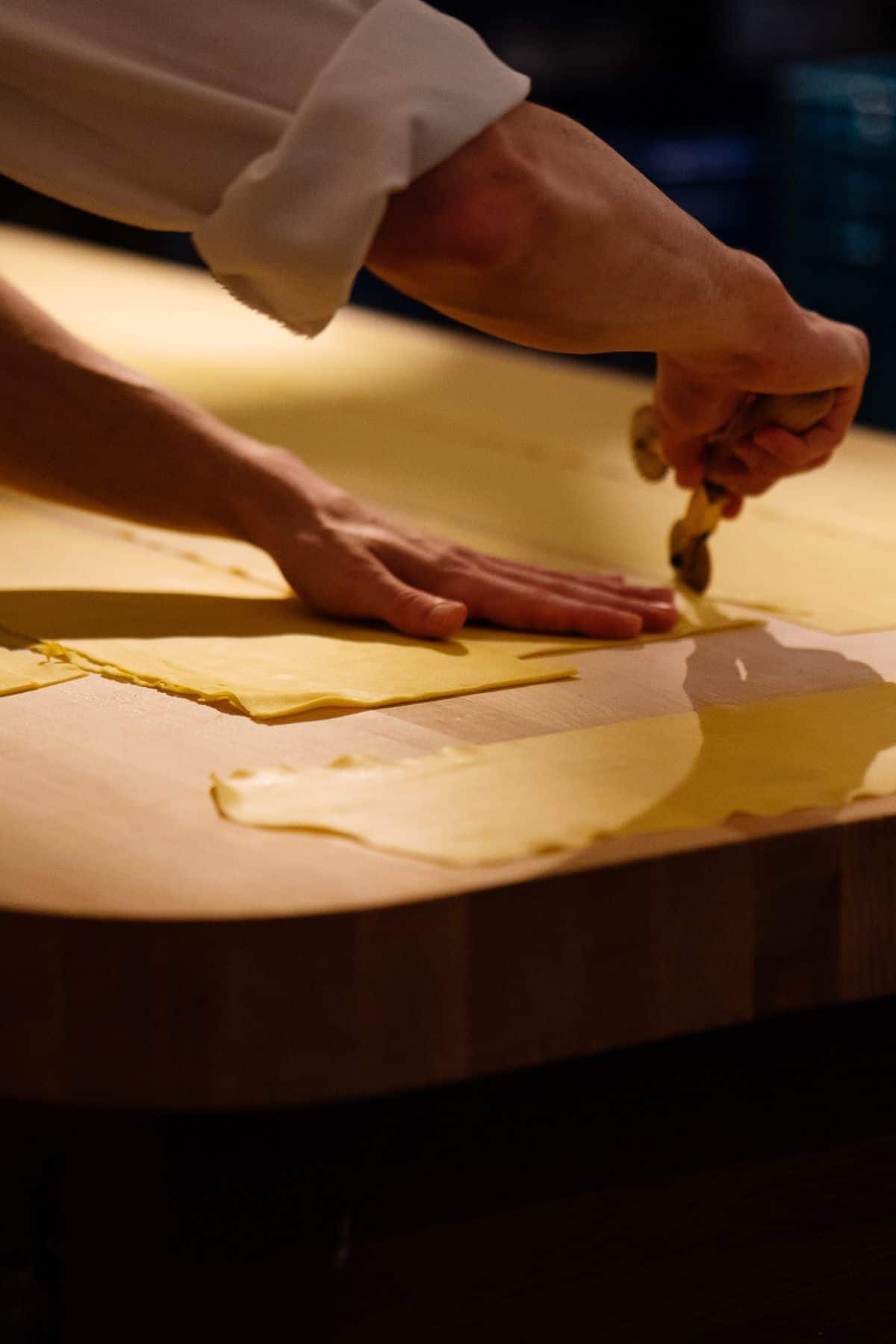Fresh ravioli is the perfect option if you’re looking for a quick, fuss-free lunch or dinner. Traditionally filled with vegetables, cheese, or meat, ravioli is a quick and easy dish that can be made in a matter of minutes. Here’s how to cook the perfect al-dente ravioli.
Fresh ravioli should be carefully added to the water and cooked for three minutes, or until al dente.
Remove the ravioli with a slotted spoon and transfer to some paper towels to absorb any extra liquid.
Origin of Ravioli

Ravioli dates back to the 14th century in Italy. The Italian word “riavvolgere,” which means “to wrap,” is where the word “ravioli” originates. ”.
Ravioli were originally served to affluent aristocrats in broth and stuffed with a combination of herbs, cheese, and eggs. Tomato sauce was not served with ravioli until the 16th century.
The recipe eventually reached the lower classes and was a staple of holiday meals as a main dish or an appetizer. Similar to other dumpling recipes from various cultures, ravioli is frequently made as a family from memory using the maker’s preferred stuffing.
While the filling for ravioli varies by region and household, it typically consists of ricotta combined with other cheeses, herbs, spinach, meat, mushrooms, or even pumpkin.
Ravioli were initially made as squares, but over time they were also made in other shapes, such as circles or half circles.
In the 1930s, Chef Boyardee produced ravioli in large quantities and popularized it in America with a tomato sauce.
How is Ravioli Made?
Making ravioli involves rolling out thick sheets of basic pasta dough with a rolling pin or through a pasta machine. The thin dough is typically placed over a mold when making ravioli at home, which makes it much simpler to evenly space out dabs of filling on top of the pasta dough.
Another sheet of pasta is placed on top and gently pressed to remove any air bubbles after the filling has been evenly distributed throughout the pasta. To keep the filling inside, a pasta cutter seals the edges of the pasta sheets and divides the dumplings.
To prevent the dough from drying out, the procedure must be completed quickly. When cooking, dry dough is more prone to cracking, so most chefs will wrap raw ravioli in plastic wrap or a damp paper towel until they are ready to cook.
Once ready, the raw ravioli is placed in a pot of boiling water and cooked until al dente, typically taking only 1-2 minutes. This is where many people run into issues.
Cook the pasta too quickly and the pockets will break. Cook it too long and the pasta will become mushy. Cook too little and the pasta will be too dense.
Nowadays, most grocery stores carry fresh or frozen ravioli, making it simple to put together a quick pasta meal with your preferred homemade marinara sauce. If you want, you could even open a can of Chef Boyardee, though I don’t advise it.
You shouldn’t be intimidated by the idea of making ravioli at home. Making ravioli at home gives you complete control over the type and quantity of filling, and the procedure is fairly simple.
When you adhere to a few basic guidelines, cooking homemade ravioli is simple whether you choose to use fresh or frozen ravioli.
At this point, you can quickly make the pasta using a ravioli maker if you don’t already have pre-made ravioli on hand. The recipe is very simple to make, and the only supplies you might need are eggs, all-purpose flour, salt, and the filling of your choice.
After this, roll up that dough. It’s crucial to keep in mind to only work with a quarter of the freshly made dough at a time in this situation. This stops the dough from drying out before being rolled. Speaking of rolling it, do so evenly and thoroughly to about 1/16th of an inch, or if using a pasta maker (also known as a ravioli maker), use the second-to-last setting on the select dial knob. Although it can be challenging, the dough should ideally span the entire width of your pasta roller. That’s approximately four to five inches wide. After this, ensure that you lay out the.
If not, you can expedite the process by eyeballing the entire amount and using a pastry bag. If you don’t have a ravioli maker, seal the dough with a pastry brush and a small bowl of water. If you have a few eggs nearby, you can also use egg whites in place of water for this.
